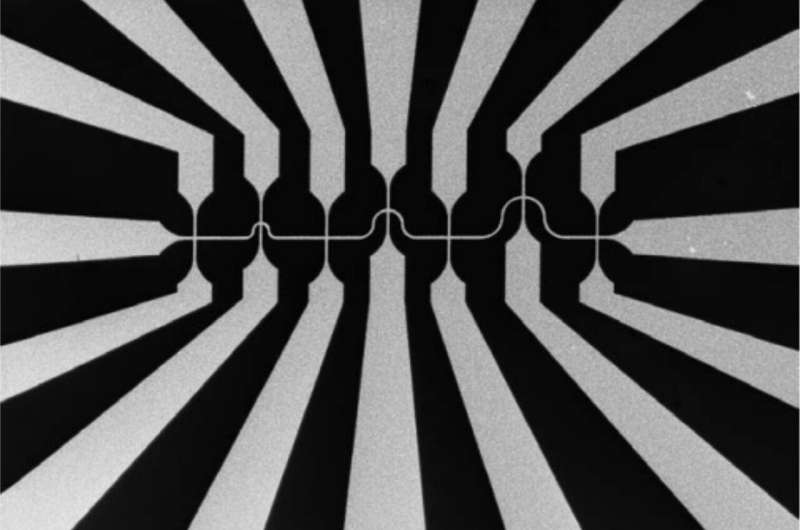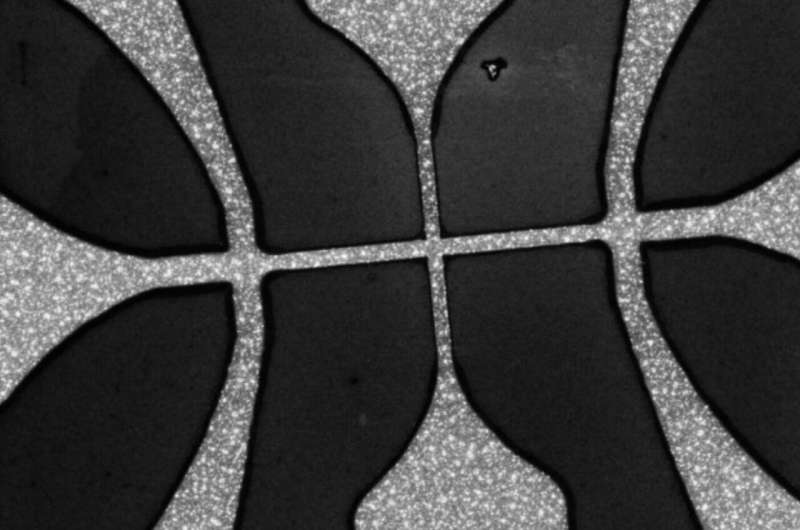March 1, 2024 feature
This article has been reviewed according to Science X's editorial process and policies. Editors have highlighted the following attributes while ensuring the content's credibility:
fact-checked
peer-reviewed publication
trusted source
proofread
Study observes a room-temperature nonlinear Hall effect in elemental bismuth thin films

After the advent of 5G, engineers have been trying to devise techniques to further enhance wireless communication technology. To increase these systems' data transmission rate, they will ultimately need to extend their carrier frequency beyond 100 gigahertz, reaching the terahertz range.
Existing devices and technologies, however, have proved to be unable to achieve such high carrier frequencies. One proposed solution to reach this goal entails the use of some quantum materials that exhibit the so-called non-linear Hall effect.
Researchers at Helmholtz-Zentrum Dresden-Rossendorf (HZDR) e.V. and University of Salerno have identified a promising material for the development of next generation wireless communication systems, namely thin film elemental bismuth. Their paper, published in Nature Electronics, shows that this material exhibits a room-temperature nonlinear Hall effect.
"Other teams had already created various materials that exhibit the non-linear Hall effect, but they do not combine all the technologically desirable properties like simple and environmentally friendly chemical composition, room temperature operation and possibility to be prepared on substrates suitable for micro- and flexible electronics," Denys Makarov and Carmine Ortix, co-authors of the paper, told Tech Xplore.
"Graphene, for example, is environmentally safe and its non-linear Hall effect can be controlled well, but only at temperatures below around -70 degrees Celsius. This means that if the researchers want to use the effect, they have to cool it down with liquid nitrogen."
Other previously examined compounds, such as transition metal dichalcogenides and some oxides, also exhibited the non-linear Hall effect at low temperatures, often even lower than those necessary to realize this effect in graphene. Makarov, Ortix and their collaborators set out to search for other materials that might be better suited for developing real-world quantum wireless communication technologies.
"We identified elemental material bismuth as a potential candidate for quantum technological applications," Makarov and Ortix explained.
"In contrast to the classical Hall effect which results from the influence of magnetic fields or magnetism in the material, the surfaces of bismuth thin films enable Hall voltages without any magnetism that are no longer linearly related to the current. This effect is of great interest because it makes new types of components for high-speed electronics possible."

To broaden their search for promising quantum materials for wireless communication applications, Makarov and Ortix started collaborating with other researchers at the ELBE Center for High Power Radiation Sources, the High Magnetic Field Laboratory and the Institute for Resource Ecology at the Helmholtz-Zentrum Dresden-Rossendorf. The primary objective of this collaboration was to identify a material in which the nonlinear Hall effect occurs in a controlled fashion and at room temperature.
Notably, such a room temperature nonlinear Hall effect would be easier to tune in real-world applications and would also be more environmentally friendly. Ultimately, the team's collaborative research effort led to the identification of thin film elemental material bismuth, which was found to have these highly advantageous properties.
"Bismuth is known for its strong classical Hall effect which is present in the bulk of the material," Makarov and Ortix said.
"We discovered that on surfaces instead, quantum effects dominate and govern the current flow even at room temperature. A major advantage of the approach is that the researchers can apply their thin films with quantum properties to a variety of substrates for electronics like silicon wafers and even plastic."
In their paper, Makarov, Ortix and their collaborators outline a strategy to control the nonlinear Hall effect in elemental material bismuth at room temperature using sophisticated micro-fabrication techniques. This strategy allowed them to directly influence the currents in their system by changing the geometry of channels on the chip.
"To show the potential of polycrystalline bismuth thin films for optoelectronic applications in the terahertz (THz) spectral domain, we have performed high harmonic generation experiments," Makarov and Ortix said.
"Polycrystalline Bi thin films reveal a high efficiency of THz third-harmonic generation (THG) that reaches levels >1% at room temperature and surpasses Bi2Se3—the benchmark material for such functionality."
The findings gathered by Makarov, Ortix and their colleagues highlight the promise of thin film elemental material bismuth for developing quantum-enhanced wireless communication technology. In the future, their paper could inspire other research groups to experiment with this material, potentially contributing to the introduction of next generation communication standards.
"We see technological potential above all in the conversion of terahertz electromagnetic waves into direct current using our thin film materials," Makarov and Ortix added. "This will make new components for high- frequency communication possible."
More information: Pavlo Makushko et al, A tunable room-temperature nonlinear Hall effect in elemental bismuth thin films, Nature Electronics (2024). DOI: 10.1038/s41928-024-01118-y
© 2024 Science X Network



















